Jail alternatives gain momentum
July 31, 2014

Thousands of mentally ill inmates are in L.A. County jail cells, making succesful treatment unlikely.
In recent months, a single word has dominated Los Angeles’ criminal justice debate, one that’s positioned the county’s top prosecutor as a champion of reform and consumed meetings of the Board of Supervisors, including this week. The word: diversion.
District Atty. Jackie Lacey, in her first term, is at the forefront of a growing, multi-jurisdictional initiative to provide community-based diversion to thousands of county inmates who suffer from mental illness and can’t be effectively treated behind bars. This, she argues, creates a cycle of recidivism that’s harmful to the individual and that ripples through society. Lacey is expected to present her recommendations in September to the supervisors, who’ve also been confronting the diversion issue.
In early June, the U.S. Department of Justice, noting a rise in jail suicides, criticized the county’s handling of mentally ill inmates and said it was prepared to seek federal court oversight of the lock-up, which is operated by the Sheriff’s Department. But the agency made a point of praising the county for its recent efforts to explore diversion for low-risk offenders.
Diversion also played a key role in the board’s recent debate to raze the old Men’s Central Jail and build a new one designed to double as a treatment facility for inmates with mental health needs. At a cost of at least $2 billion, Supervisor Zev Yaroslavsky cast the only dissenting vote, arguing that community-based diversion programs should have been fully explored before the county committed to its most expensive construction project ever.
On Tuesday, the board again tackled the topic—this time debating a motion by Supervisor Mark Ridley-Thomas to, among other things, commit $20 million for a “coordinated and comprehensive” diversion program for mentally ill inmates. The board, he argued in his motion, “needs to demonstrate its financial commitment to diversion.”
Although supervisors expressed strong support for placing low-risk mentally ill inmates in community-based diversion programs, the majority 0pposed earmarking money without a spending plan. The better way, they said, was to see what Lacey recommends and then consider the funding during the board’s late September budget process.
“We would be making a huge mistake just throwing money at it and saying: ‘Look at us. Aren’t we great at diversion?’” said Supervisor Gloria Molina. “We need to be thoughtful. We need to have a plan.”
Supervisor Yaroslavsky said that nearly a decade ago, the county set aside tens of millions of dollars to combat homelessness. But like now, he said, there was no blueprint for spending it. “We were so excited to have the money to set aside,” he said, “we forgot to develop a plan. And so we shouldn’t make that mistake a second time.”
“We need to have a road map,” Yaroslavsky continued. “I have confidence that under the leadership of the district attorney, with the participation of all of us, we can develop something like that.”
The board voted to consider the motion’s funding element during supplemental budget deliberations in late September.
Posted 7/31/14
Sky rangers get their day in the sun
July 24, 2014
Not many people immediately think of the Santa Monica Mountains as a hotspot for star sightings in L.A. But Ranger Robert Cromwell of the National Park Service has a contrarian view when it comes to glimpsing famous luminaries.
“Meteor showers, the Orion Nebula, Saturn, Jupiter, the Transit of Venus, which only happens once every 110 years—we’ve had some spectacular sightings up here,” says Cromwell, the Santa Monica Mountains National Recreation Area’s coordinator of night sky programs.
“It’s always eye-opening to people,” he says. “Here we are, right next to one of the world’s biggest cities and yet you can actually see the Milky Way.”
This, Cromwell says, is partly because preservation of the night sky has become a priority in the mountains, both by the National Park Service and by the county, which has regulated artificial light in rural areas with a Dark Sky Ordinance since 2012. Soon, a sweeping new environmental plan for the Santa Monica Mountains, awaiting final approval by the Board of Supervisors, will protect those starry night views for generations to come.
Cromwell and a small team of park volunteers and rangers have made it their business during the past three years to turn the public on to Los Angeles’ celestial treasures and to the importance of protecting night skies from light pollution.
Cromwell calls his team “The Night Sky Rangers.” Since 2011, when they threw their first mountaintop stargazing party, astronomy events at the recreation area have become seasonal extravaganzas. Last year’s Summer Star Festival drew a crowd of 800, and this year’s, scheduled for August 2 at 7:30 p.m. at the park’s Paramount Ranch, is expected to be just as popular, if not more.
More than a dozen telescopes will be trained to night sky attractions, the Santa Monica Mountains Ranger Band will play astronomy-themed rock music, and there will be children’s programs and lectures by local astronomy and physics professors.
The emphasis on night sky preservation stems from a National Park Service decision in the late 1990s to formally recognize the night sky as a natural resource. As development encroaches on wilderness across the nation, streetlights and billboards have systematically crowded out starlight. Two-thirds of Americans, by some estimates, are now unable to see the Milky Way from their backyards.
Natural nighttime darkness is important not only to the circadian rhythms of humans but also to many wildlife species, who rely on natural patterns of light and dark for navigation and protection from predators.
Some national parks are renowned for their lack of light pollution. Death Valley National Park, for instance, is home to an assortment of Full Moon Festivals and Mars Fests, and the International Dark Sky Association has designated it the world’s largest “dark sky” park.
Most of the Santa Monica Mountains recreation area, which straddles the Los Angeles-Ventura County line north and west of the city, is too close to L.A. and saturated by city lights to get that kind of a designation, says Cromwell.
“But there are some sites within the mountains that I think have potential,” he says.
The Dark Skies Ordinance, passed two years ago by the county, restricts rural lighting across a designated district that hopscotches from Rowland Hills through the Antelope Valley and the Santa Monica Mountains to the coast. County code enforcement officers say that since the ordinance’s passage, cases have dropped to a handful as rural property owners have become better educated on the issue.
Park officials also have played a role in raising consciousness. Among other things, they’ve weighed in on development proposals, working with the City of Agoura Hills, for instance, to prevent light from a parking lot from encroaching too badly on a nearby wildlife corridor.
The park also has dimmed its own light footprint, hoping to lead by example.
Park spokeswoman Kate Kuykendall says about 65 percent of the park’s lighting is now night-sky-friendly LED, and outdoor fixtures are being switched to point downward instead of toward the sky.
Cromwell, who has been a ranger in the Santa Monica Mountains for five years, says the night sky has fascinated him since his childhood in Moorpark. One of his most vivid memories is when he was about 11 or 12 and surfing Malibu at twilight. He laid back on his board.
“It was one of those clear nights that you don’t always get at the beach, and I remember looking up and seeing the stars and seeing them reflect on the water,” he says of that memorable summer evening. “I was just, like, wow.”
The astronomy festivals grew out of a 2010 Yosemite National Park workshop. The national parks were encouraging night sky programming, Cromwell says, and although astronomy so close to a city seemed a challenge, he and his fellow park workers decided to try.
He, volunteer campground host Tony Valois and Ken Low, another park ranger with expertise in the night sky, have developed relationships with local enthusiasts, who now provide help and equipment. At the upcoming festival, for example, the Ventura County Astronomical Society will provide some of the telescopes, Cal Lutheran University Professor Mike Shaw will offer a family friendly tutorial on stargazing and Hal Jandorf, an astronomy professor at Moorpark College, will lead a constellation tour.
“The experts really make it possible,” Cromwell says. “And when people look out and see the glow from a development or something, they become conscious of how important it is to preserve experiences like this. Because on clear nights, you can see other galaxies sometimes. It’s spectacular.”
This year’s Summer Star Festival is scheduled for August 2 from 7:30 p.m. to 10:30 p.m. at Paramount Ranch, 2903 Cornell Road, Agoura Hills. In the event of rain, the program will be cancelled. For more information, call 805-370-2301
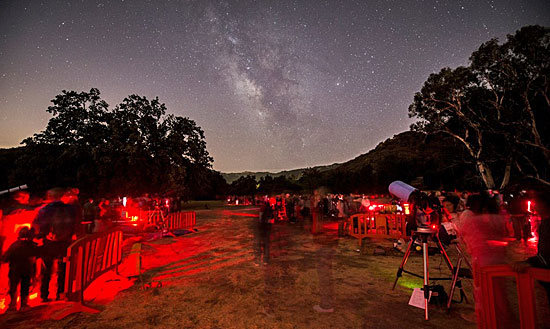
Last summer's festival drew a crowd of 800. Red cellophane light filters are used to reduce glare. Photo/Mike Shaw
Posted 7/24/14
The path more travelled
July 24, 2014
People are increasingly hitting the dusty trails and wilderness areas of the Santa Monica Mountains these days.
During the first six months of this year, the National Parks Service recorded 547,243 visits to the area—146,700 more than in the same period last year, a whopping 37% increase.
George Watland, Angeles Chapter director of the Sierra Club, said that kind of attendance surge is great news for the environment.
“Having people visit protected areas makes them more aware of what they are and why they’re valuable,” Watland said. “We’re glad about that.”
The spike is part of a longer-term increase in park usage stretching back to 2007. Melanie Beck, the park’s outdoor recreation planner with the National Park Service, said that’s generally a positive thing.
“They’re seeing first-hand the beauty and peace that the park offers, as well as the health benefits,” Beck said. “We want that—it builds stewardship, not just for this park but for parks in general.”
While tourists and out-of-towners often prefer sites with a Hollywood past like Paramount Ranch, locals increasingly are taking advantage of places that they can reach during a day trip. Beck said the rise in park use closely coincided with the rise of social media. Specific locations now become popularized by photos and stories shared on Instagram, Facebook and Twitter, while websites like Meetup.com have created a spike in group hikes. Beck said 20 or more people will meet at a time, which can cause problems when inexperienced hikers venture off the beaten path onto rugged terrain.
“People tend to grab at branches and break them; they scrape lichens and other sensitive species off of rocks,” Beck said. “It’s better to stay on the designated trails when you’re going out with a group.”
While off-trail hiking is permitted by the National Park Service in the Santa Monica Mountains, large groups walking in a line can create impromptu new paths, damaging habitat in the process. Horseback riding, mountain biking and dog walking off-trail are strictly prohibited.
Another problem occurs when hikers put themselves at risk by taking on wilderness that is above their ability level. Inspired by online videos, thrill-seekers become stranded, get injured, and often require assistance from local rescue units. (Across town in the Angeles National Forest, a series of fatal accidents recently prompted officials to close a popular hiking trail to Eaton Canyon’s Upper Falls.)
Organizations like Leave No Trace offer guidelines on how to get outdoors in environmentally responsible and safe ways, and the National Park Service distributes pamphlets, but Beck said more aggressive tactics are needed.
“We’re going to have to find new ways to educate people,” she said. “Things have just changed with social media.”
Beck is not trying to discourage would-be adventurers; she wants as many people as possible to enjoy the land safely and responsibly. To that end, a member of her team organizes regular, free outdoor events that include wildlife-spotting expeditions, campfire talks and youth fitness outings. Many of the events have an educational angle and are led by experts who share their nature savvy.
The heaviest trail traffic comes on sunny days when schools are out of session, but Beck and veteran hikers prefer cool, overcast days, early mornings and late evenings, when fewer people are out and the weather is more comfortable. Beck took advantage of last weekend’s clouds to hike what is usually one of the park’s hottest trails, temperature-wise—the China Flats Trail in Cheeseboro Canyon. She even spotted a tarantula along the way (the spiders prefer cloudy weather, too).
One major advantage of public wilderness areas is that they offer solitude and a connection with nature, especially in the remote areas of park, which are particularly sensitive to foot traffic. That appeals to L.A.’s city-dwellers. “They’re going places in the mountains that we never expected people to go, and in numbers,” Beck said. “I hope they can use the park safely, without damaging resources. That takes an educated public and a caring public.”
Posted 7/24/14
Art is the next big thing
July 24, 2014

"Nighthawks," from the collection of the Art Institute of Chicago, will be seen in L.A. and nationwide.
Edward Hopper’s moody “Nighthawks” will be having their after-hours cups of java on a wall in San Francisco—and at 18 feet high by 50 feet wide, they’ll be hard to miss.
Grant Wood’s dour duo from “American Gothic” will be living large on the staircase of New York’s Port Authority.
And here in L.A., rush hour traffic will be getting a jolt of cultural uplift as buses rumble by wrapped in iconic works like Ed Ruscha’s “Hollywood.”
Just like millions of vacationers, American art is hitting the road this summer.
Starting August 4, 58 masterpieces will be breaking out of five major museums and onto the streets. The exhibition, called Art Everywhere US, is modeled after a similar show in the United Kingdom and is intended to create what the organizers call a “free, open-air art gallery across the country” throughout the month of August.
The featured reproductions include 11 pieces from the Los Angeles County Museum of Art. Among them: Andy Warhol’s “Campbell’s Soup Can,” Roy Lichtenstein’s “Cold Shoulder,” Willem de Kooning’s “Montauk Highway” and Mark Rothko’s “White Center.”
But L.A.’s al fresco gallery won’t be limited to the LACMA works; all 58 of the featured pieces will be on display here at some 500 locations around town. Exact locations will be announced soon on the project’s website, where an interactive map will make spotting the masterpieces easy. There also will be an Instagram contest for people to show off selfies they’ve taken with the oversized artworks.
In addition to the wrapped buses, “the digital billboards in L.A. will be featuring the art works,” said Stephen J. Freitas, chief marketing officer of the Outdoor Advertising Association of America, which is collaborating on the project with LACMA, the Art Institute of Chicago, the National Gallery, the Whitney and the Dallas Museum of Art. “We’ve got a wonderful Warhol that’s going to be coming your way on a lot of bus shelters.”
Nationwide, the art is being displayed in all 50 states on donated billboard and other advertising space valued at tens of millions of dollars, Freitas said. The effort started with 100 works of art suggested by the museums; members of the public then had a chance to vote on their favorites to winnow down the list to the final 58.
Taken together, the pieces represent a kind of American Art 101—from Gilbert Stuart’s portrait of George Washington to Robert Mapplethorpe’s portrait of “Ken Moody and Robert Sherman.”
“It’s a great opportunity not only for LACMA to represent Los Angeles, but to show its history through a painting like Millard Sheets’ ‘Angel’s Flight,’ or Ed Ruscha’s depiction of the Hollywood sign,” said Michael Govan, LACMA’s director and CEO.
And you don’t need to be an art history major to enjoy it.
“We’re hoping this campaign will help drive more interest in American art and drive people to more American museums to see art in person. But we also think it’s a great way to just give people a lift in their day, give them something unexpected on their way to work or traveling down the road,” Freitas said. “We think it will inspire a little happiness in American life, we hope, for a few days or a few moments.”
Posted 7/24/14
405 bridge work causes a stink
July 24, 2014
The bridge that brought you Carmageddon is back in the spotlight this weekend—in a decidedly less dramatic role.
The Mulholland Bridge over the 405 Freeway will be closing on Friday and Saturday nights so that workers can seal the surface with a substance called methacrylate. The work is needed to coat “very small cracks” that have developed on the bridge surface. Methacrylate is a common though sometimes odiferous treatment for concrete decks.
“These aren’t structural defect cracks,” said Mike Barbour, who is Metro’s lead on the $1-billion-plus 405 Project, which is now virtually complete and is in its final “punch list” stage. Rather, he said, they are the kind of tiny cracks that can emerge when “the surface dried out too soon.”
The bridge will be closing from 10 p.m. Friday till 8 a.m. Saturday, with the pattern repeating on Saturday night through Sunday morning.
Beyond the detours, there’s this side effect: “An unpleasant odor may arise from this treatment,” according to a construction notice advisory sent out this week.
Few residents are likely to be troubled by the smell, however, Barbour said.
“There’s nobody really close by,” he said. “I seriously doubt that it’ll affect anyone.”
The Mulholland Bridge sparked a global media sensation in two Carmageddons during which it was demolished and completely rebuilt. The bridge work came as part of an ambitious effort to improve numerous elements of the 405 through the Sepulveda Pass while adding a 10-mile northbound carpool lane. The new lane opened in May.
Posted 7/24/14
A farewell to lawns
July 17, 2014
Start saying so long to the lawns of Southern California.
As the realities of climate change and drought have begun to sink in statewide, local figures indicate that homeowners have finally begun—gradually—to let go of their grass.
Amid new state conservation mandates and growing financial incentives, thousands of lawns and millions of square feet of green turf have disappeared during the last three years in Los Angeles County, much of it during the past year of record-low rainfall.
The reason? Outdoor irrigation is now consuming an estimated 50 percent of the average water bill.
This week, in an unprecedented action, the State Water Resources Control Board made it a statewide criminal infraction to waste water, particularly on landscape irrigation. Meanwhile, cities throughout the county have upped turf removal incentives encouraging homeowners to go drought-tolerant, at least in their front yards.
The moves have accelerated a trend that is already approaching critical mass in Southern California, even as they reorder a landscape that has long characterized the region.
“It’s slow, but things are really changing,” says Matthew Lyons, director of planning and water conservation for the Long Beach Water Department.
“Three of the last four years have been dry and this last winter was catastrophic. There’s just not a future here for grass lawns.”
Acceptance of that reality hasn’t been easy.
“People have had a hard time letting go of their beautiful green sward,” says Lili Singer, director of special projects and adult education for the Sun Valley-based Theodore Payne Foundation, a native plant organization that has done a land-office business this year helping county homeowners rethink their landscapes.
“Everybody on the block has the same setback and the same yard and people don’t want to be the oddball,” said Singer. “But there’s also this thing about having an estate.”
“It’s an enormously emotional thing,” agrees Stephanie Pincetl, director of the California Center for Sustainable Communities at UCLA. “People’s property values are tied up in it. And there’s the sort of iconic manliness in having a good-looking lawn that’s reinforced by TV programs and ads and all sorts of cultural messages.”
Generations of L.A. suburbanites can attest to this cultural attachment, whether they grew up tending the dichondra around a San Fernando Valley ranch house or assiduously edging the Bermuda grass at a Mid-Wilshire cottage.
Pincetl said that when she replaced the grass on the median strip of her small condominium complex last year with colorful, drought-tolerant plantings, a neighbor sent her a note accusing her of “threatening to destroy the aesthetic of the street and overpower the parkway.”
Cultural historian Ann Scheid says that aesthetic dates to the 1800s, to East Coast settlers who “imported their architecture from the East, and imported their lawns, too.”
Though a native plant movement did crop up here in the 1890s, she said, it didn’t catch on then because many of the large estates were second homes whose owners only visited during the winter.
By 1912, she noted, Los Angeles also had the L.A. Aqueduct, and, later, the Metropolitan Water District, which imports water from the Colorado River.
“So we never really had to face the problem,” she says. “Until now.”
Now, with climate change heating an already arid and densely populated region, conservation has become a mantra.
Some communities have been ahead of the curve: In Santa Monica, where no-grass lawns have become common, a pair of decade-old demonstration gardens have helped show the value of drought-tolerant landscapes, not just in water savings but in diminished labor and green waste.
The City of Los Angeles has imposed mandatory water conservation rules on homeowners since 2007, including alternating watering days and a ban on daytime lawn sprinkling. The city Department of Water and Power says the strategy has cut L.A.’s water use by 17 percent over the last seven years.
Also useful have been MWD’s conservation incentives and turf removal rebates, which have been increasingly adopted by member cities this year as the drought has worsened. The MWD rebate doubled in May to $2 per square foot, an incentive that can be augmented by member cities. In Los Angeles, the rebate is $3 per square foot; in Long Beach, it’s $3.50.
The program has prompted more than 1,900 L.A. homeowners to switch from grass to “California Friendly” landscapes during the past three years; in Long Beach, the toll has been 1,300 lawns, including 433 so far this year.
“I have a lot of cactus now, and perennials and lavender and lily of the valley,” says Long Beach resident Argy Abel, who took advantage of her city’s program two years ago, and is now one of three homeowners on her block alone to have gone grass-less.
Even smaller programs have made a mark: Though only a limited number of water users have qualified for the Los Angeles County Department of Public Works’ turf replacement program, the “Cash for Grass” incentive has made more than 250 grass lawns disappear, mostly in the Antelope Valley. And that’s not counting the people who went drought-tolerant on their own.
Still, some neighborhoods remain cautious. Beverly Hills, for example, not only has a longstanding lawn culture, but also supplies about 10 percent of its own drinking water through a municipal water treatment plant.
There, turf replacement incentives haven’t found many takers, though the city has had some luck with voluntary conservation and a high-tech, remote leak detection system, says City Manager Jeff Kolin. He says that with the new state mandates, “we’ll probably be adding some more incentives and enforcement.”
Good luck, says Peter Eberhard, a Westside landscape designer, who notes that wealthier homeowners tend to have bigger lawns and less sensitivity to the price of water.
“No one is calling us and saying, ‘Oh, I’m concerned about this drought, please take my lawn out’,” he laughed.
Posted 7/17/14
Tough audit sparks reforms
July 17, 2014
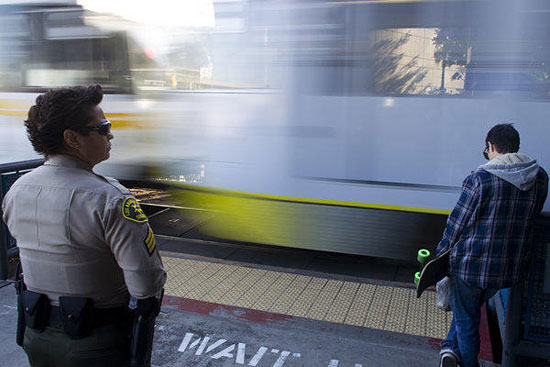
A sheriff's deputy keeps an eye on goings-on at a Blue Line platform last fall. Photo/Los Angeles Times
A hard-hitting new audit says the L.A. County Sheriff’s Department has failed to live up to its multimillion dollar contract to police the Metro system, while the transit agency itself has done a poor job of monitoring the sheriff’s performance.
The audit was commissioned by Metro’s Board of Directors last year and performed by the firm Bazilio Cobb Associates, with a team including members of the Bratton Group, LLC. The May 27 report faulted the sheriff on a number of fronts, including lack of a community-policing plan for the nation’s third-largest bus and rail system, perennial staff vacancies, tardy responses to citizen complaints and inadequate records to support its billings.
Overall, the audit determined that both the Sheriff’s Department and Metro had significant improvements to make.
“We found that Metro needs to substantially strengthen and enhance its oversight of LASD contract performance,” it said. “We found LASD has not met many of the targets for performance metrics, including crime reduction, continuity of staff, and fare enforcement saturation and activity rates.”
The audit was presented to Metro’s System Safety and Operations Committee on Thursday. CEO Art Leahy told the panel that new management at the sheriff’s department now has “an intense focus on delivering the goods here. There’s no finger-pointing, there’s no excuses. They can do better and Metro can do better.”
Sheriff’s Cmdr. Michael Claus, while disagreeing with a few of the report’s conclusions, said most of its 50 findings were on target.
“The bottom line is: we didn’t do what we should have done,” Claus said in an interview. “No one likes to be told they’re not doing a good job, but they were right in a lot of areas.”
Claus, who became Metro’s head of security in January, said reforms already are underway. Those include upgrading the Transit Services Bureau into a full-fledged sheriff’s division with its own chief, to whom Claus now reports. That move, effective July 1, will give structure to the team and enable it to advocate more effectively for staff resources, Claus said. It also may be a morale-booster for deputies assigned to the transit beat, which the audit said has been considered undesirable or even punitive by some within the department.
“By making it its own division, probably 20 people have removed their transfer requests,” Claus said.
The audit comes as the sheriff’s Metro contract—by far the department’s largest—is up for renewal. The new contract will likely be worth more than $400 million over five years, the report said. The department currently is working under a $42 million six-month contract extension that expires on Dec. 31.
The audit covered five years beginning July 1, 2009 and found lots of room for improvement. Among its findings:
- Critical information—such as up-to-date blueprints and maps of station layouts—needed in the event of an attack on Metro’s transit system has not been shared with key tactical response units within the sheriff’s department. (Claus, a former SWAT officer and commander, said an effort to provide up-to-date, digitized information is underway, but insisted that the sheriff’s units in question already are familiar with Metro facilities.)
- The transit security operation has operated with high levels of vacancies and too often sends in substitute staff without the necessary transit expertise.
- The department has double-billed for some supervisors’ time; billed Metro at the full rate even when managerial, supervisorial and support positions went vacant; failed to provide enough backup documentation of time being worked; and in fiscal 2011 submitted bills of $59,368 above the maximum amount allowed under the contract.
- Customer complaints against deputies often are not processed on time, and deputies with multiple complaints against them usually aren’t routed into the department’s “performance mentoring program.” (Claus said a backlog stretching to 2010 has now been eliminated.)
- Mobile phone validators used by deputies to check patrons’ TAP cards are technologically inadequate and can’t be used for basic crime-fighting tasks, such as looking for outstanding warrants when people are stopped for fare checks. Better fare-validation devices are being developed, the audit said, but other issues involving checking TAP cards remain unresolved—notably the question of whether that duty should be handled primarily by Metro’s own security staff rather than sworn deputies.
- Crime reporting and response time statistics are not being appropriately reported. (The department has switched, as recommended, to the FBI’s Uniform Crime Reporting standards, Claus said. He said the department disagrees, however, with a recommended change in reporting response times that would start the clock running when a Metro operator receives a call—not when it reaches the sheriff’s department.)
The audit also said the sheriff’s transit security team was not engaged enough in making quality of life improvements in Metro facilities.
But, according to the sheriff’s department, that finding overlooks a notable recent success story.
“Deputies have made tremendous strides in cleaning up Union Station; examining and solving delicate homeless rights issues, solving quality of life issues, making the area a cleaner, hazard-free experience for patrons, etc.,” according to the official response to the audit from interim Sheriff John Scott. “More is to be done, but to say that great strides have not been obtained would simply not be reflective of the current status.”
As for Metro, the audit found that the agency has failed to set forth adequate contractual requirements for the sheriff’s department, and has been lax about keeping tabs on the requirements that are in place.
In a response to the audit, Duane Martin, the agency’s deputy executive officer for project management, wrote that his department is asking for more staff to provide better contract oversight. He said Metro also will seek to modify its existing contract to enable it to seek damages if the sheriff doesn’t live up to specified performance targets—including crime reduction and continuity of staffing—and will write that into the next contract as well.
Beyond the audit, Metro CEO Leahy said he also has ordered a peer review of his agency’s security services by the American Public Transportation Association. Those findings will be examined, along with the audit, by Metro’s board this fall.
Posted 7/17/14
Looking at Valley rail and beyond
July 17, 2014
A push to transform the popular Orange Line busway into the San Fernando Valley’s first light rail line may also jumpstart a broader examination of what the next chapter in L.A. County transportation could look like.
Metro’s Board of Directors next week will consider a motion to study options for improving the Orange Line, along with the possibility of connecting the Orange, Red and Gold Lines with Burbank and Bob Hope Airport. But that motion—by L.A. City Councilmember Paul Krekorian, Mayor Eric Garcetti, Glendale City Councilman Ara Najarian, Supervisor Zev Yaroslavsky and Duarte Mayor John Fasana—has now prompted a related push to create a roadmap to update Metro’s long term plans for the entire county.
Taken together, both concepts, if approved by the agency’s full board, could begin to give shape to the list of projects that might be included in potential new transit sales tax measure that could be on the 2016 ballot.
“It has to be part of a transparent, inclusive and innovative long range planning process from which a new sales tax ballot initiative should emerge,” said Santa Monica Mayor Pam O’Connor, who proposed the countywide amendment along with Lakewood Councilmember Diane Dubois and Supervisor Don Knabe at Metro’s Planning and Programming Committee meeting this week.
The current push to investigate upgrades to the Orange Line comes after Governor Jerry Brown recently signed into law a bill permitting ground-level rail in the busway’s corridor.
Some have argued that other, less costly improvements are the best way to improve the Orange Line—which is carrying nearly twice the people originally projected and has been reaching capacity during rush hours.
But Coby King, board chairman of the Valley Industry and Commerce Association, the primary backer of the new state legislation, said converting the bus line to rail is the best way to serve the Valley’s 1.77 million residents.
“The problem is that the Orange Line has become a victim of its own success,” King said. “We believe that rail is the answer. Let’s do the objective study and let the chips fall where they will and we can make a decision on the facts—and a certain amount of equity.”
King added that Measure R, the original 2008 half-cent sales tax measure to fund transit projects, brought 36 miles of new rail to other parts of the county but left the Valley with none. For the region to support a new tax measure, additional rail lines for the Valley would have to be a part of the equation, he said.
At the committee meeting, Metro CEO Art Leahy weighed in on the big picture as well as the specific concerns of Valley residents.
“Without a doubt the number of projects is going to exceed the amount of money a measure is going to generate, so at some point we are going to have to sit down with the subregions and talk turkey about what goes in,” Leahy said.
Posted 7/17/14
Shark bite opens debate
July 10, 2014
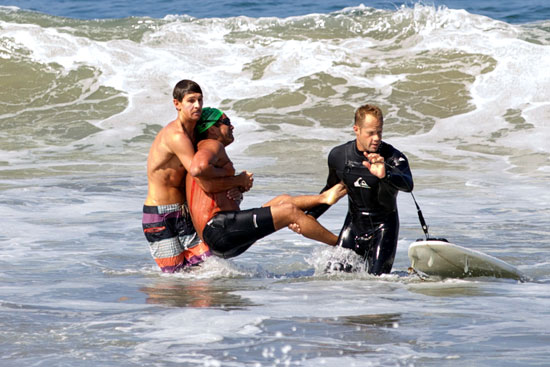
Steve Robles is pulled from the Manhattan Beach surf after his encounter with a snagged white shark.
The fisherman is off the hook. But his headline-grabbing behavior on the Manhattan Beach pier—when he snagged a young great white shark that thrashed and ended up biting a swimmer—is still churning up debate over how best to protect the beach-going public.
Manhattan Beach has quickly moved to ban all fishing from the pier for up to 60 days, although the California Department of Fish and Wildlife is weighing whether the city may have overstepped its authority on the state-owned pier. Meanwhile, Los Angeles County lifeguard officials have begun refining a new policy to create buffer zones between swimmers, surfers and the young sharks that increasingly are making Manhattan Beach their home before they head to deeper waters.
What’s more, officials now are being forced to confront an undercurrent of hostility that for years has strained relationships around the 94-year-old concrete pier, the oldest in California.
The sensational incident during the July 4th weekend—mistakenly characterized in early news reports as a shark attack—has exposed long-running complaints by surfers and swimmers that some pier fishermen have been endangering them. Among other things, they accuse fishermen of illegally “chumming”—dumping buckets of fish guts off the pier—to attract sharks.
“Tempers have been flaring,” said Los Angeles County Lifeguard Captain Kyle Daniels, who’s stationed in Manhattan Beach. “We do our best to separate the groups but it’s a dynamic situation. This goes back years.”
The Saturday incident brought it all to the surface, generating a wave of national news coverage and social media finger-pointing—most of it aimed at the fisherman and his friends, who were bombarded with allegations of animal cruelty and human indifference. The group was caught on video laughing and joking in the moments before they realized that a swimmer had been hurt by the distressed shark on the end of their high-gauge line. As of Thursday, the video had more than 1.4 million views.
According to witnesses, fisherman Jason Hagermann had been battling with the 7-footer for 45 minutes. The fish surfaced just as a group of distance swimmers passed while training for an upcoming pier-to-pier event. The victim, Steve Robles, can be heard on the video wailing as other swimmers rush to his rescue. Robles, a former L.A. County lifeguard himself, suffered serious but non-lethal gashes under his arm and along his side.

Juvenile great whites have been feeding in Manhattan Beach "like infants at an all-you-can-eat buffet."
Under state and federal law, it’s illegal to target great whites. If one gets hooked, then the line must be promptly cut. Hagermann told Fish and Wildlife investigators that he hadn’t been fishing for great whites and that he was afraid to cut the line while so many swimmers were nearby. With no evidence to contradict him, an agency spokeswoman said, no charges were filed.
Still, county lifeguard Daniels and others familiar with shark behavior insist the fish would never have bitten anyone had it not been fighting for its life. “If you lassoed and dragged a bear through a crowd,” he said, “I’m sure someone would get hurt.”
Daniels also said that the exceptionally strong wire-like line the fisherman was using posed a far greater danger to public safety than the juvenile shark. Had the fish quickly darted across and underneath the group of swimmers, “the line would have cut through to the bone.”
Laurie Jester, acting director of community development for Manhattan Beach, said the 60-day ban on pier fishing will give officials an opportunity to determine whether new restrictions should be imposed to avert these kinds of preventable risks.
“There’s a public safety concern with fishing on the pier,” she said, “and we want to make sure we’re covering all our bases, consulting with all the right people.”
The Los Angeles County Fire Department, which oversees lifeguard operations, has also moved in recent weeks to protect swimmers and surfers from potential harm.
Chief Daryl Osby said the department introduced a policy this summer to create “exclusionary zones” 300 yards into the water when sharks bigger than 8 feet are spotted because, unlike juveniles, these animals “can sometimes exhibit aggressive behavior, representing a public threat.” Osby said the department, in consultation with scientists at the Monterey Bay Aquarium, has developed a public education program “so beachgoers can become aware of the environment and habitat they’re about to enter.”
That habitat, scientists and others say, is increasingly a shared one, as rising numbers of young white sharks are taking up temporary residence at the popular El Porto surfing area, at Manhattan Beach’s northern end.
As a result, “the curious and the YouTube seekers” are boarding all sorts of crafts for a view of the sharks as they feast on the bay’s plentiful offerings, “like infants at an all-you-can-eat buffet,” said Manhattan Beach’s ex-mayor, Steve Napolitano, now a senior aide to Los Angeles County Supervisor Don Knabe, whose district includes the South Bay.
International big-wave rider Alex Gray, who’s also an avid fisherman, has been playing in the Manhattan Beach surf since he was a kid. He resents the human intrusions into the young white sharks’ habitat.
“Give the animals the respect they deserve and allow them to be at home,” he said the other day, as he looked out across the Pacific. “What if I walked into your house, took a picture of your family eating dinner and then walked out? Give respect, get respect. Just let them be.”
“I’ve traveled the world and I’ve never once had a bad encounter with a shark,” he added. “If I see a shark, I give it its area. I would never paddle up to it for a picture.”
Gray, 28, said the one thing that “breaks my heart” about the Manhattan Beach incident is that “kids might now be afraid to go into the ocean…I love this community more than anything. It hurts me when I see negativity that doesn’t need to be there.”
Posted 7/10/14




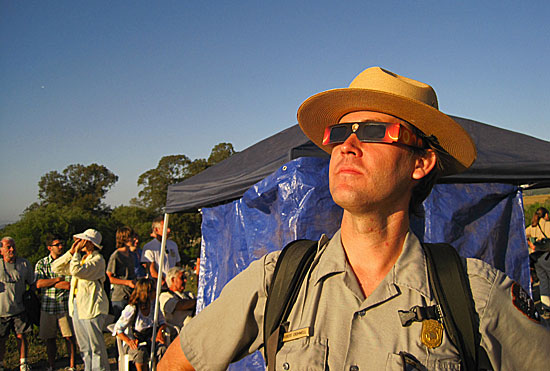
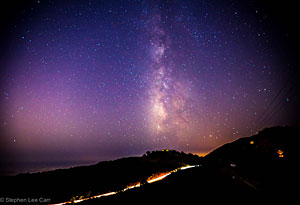



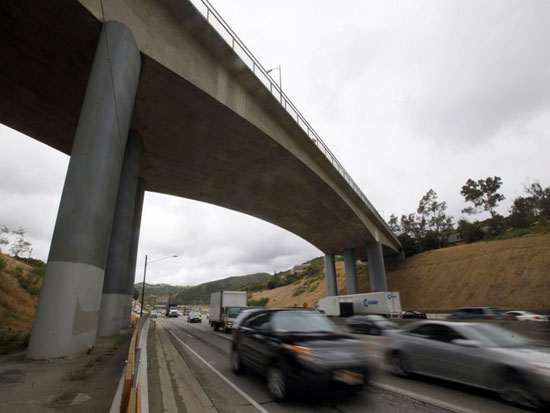




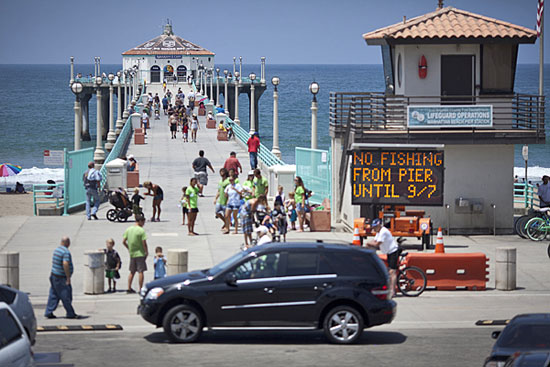





 Check for the latest closure information
Check for the latest closure information








